Kyrgyzstan Flag Meaning
A red field with a yellow sun featuring 40 rays and a tunduk (yurt crown) in the center, representing the nomadic heritage, unity of 40 tribes, and the traditional dwelling of the Kyrgyz people in this mountainous Central Asian nation.
- Continent
- Asia
- Adopted
- 1992
- Ratio
- 3:5
- Colors
- red, yellow
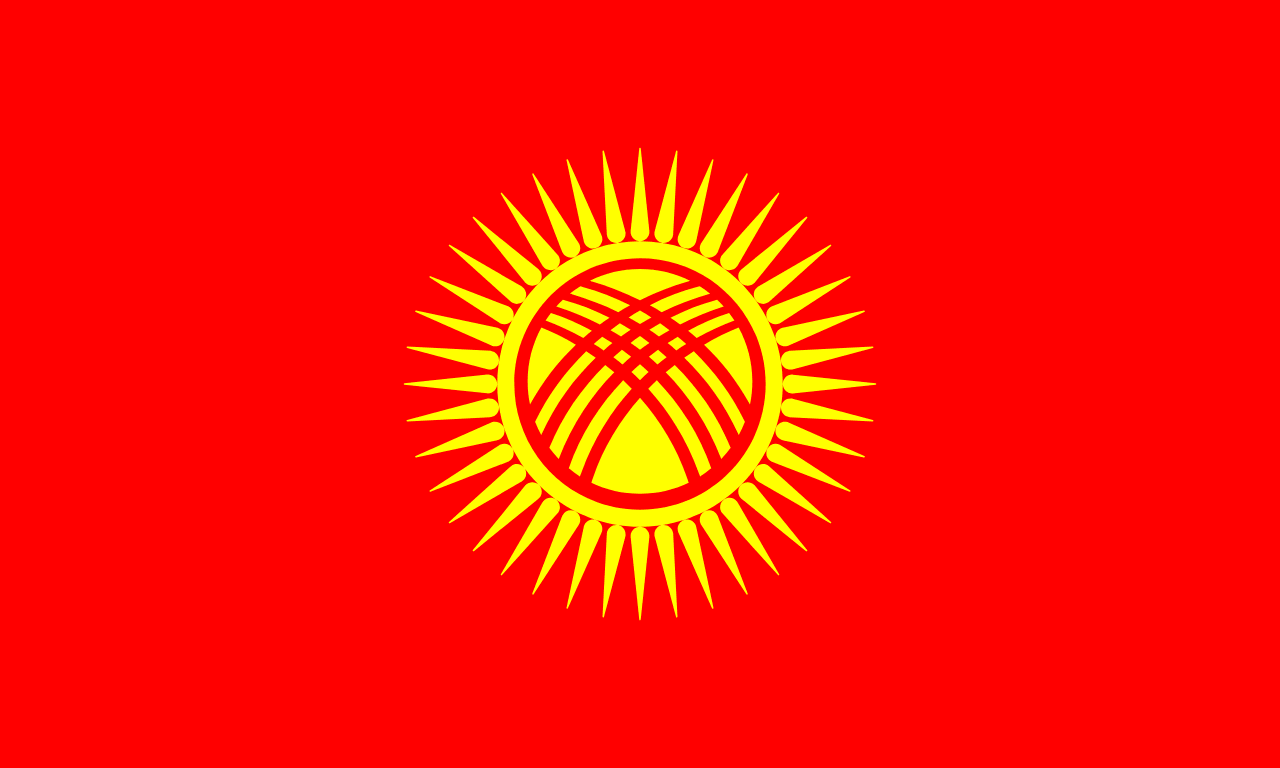
Symbolism
Red Field: Represents courage, bravery, and the valor of the Kyrgyz people. Also symbolizes the unity and strength needed to maintain independence in the challenging mountain environment of Central Asia.
40 Sun Rays: Represent the 40 tribes that were united by Manas, the legendary Kyrgyz hero central to the world's longest epic poem. The number 40 is sacred in Kyrgyz culture and appears throughout their traditions.
Tunduk (Yurt Crown): The stylized representation of the crown of a traditional yurt symbolizes the nomadic heritage of the Kyrgyz people, representing home, family, and the portable architecture that enabled survival in the mountains.
Yellow/Gold Color: Symbolizes prosperity, wealth, and the bright future of Kyrgyzstan. Also represents the sun that shines over the Tian Shan mountains and the golden autumn landscapes of Central Asia.
Nomadic Identity: The overall design celebrates the traditional nomadic lifestyle that defined Kyrgyz culture for centuries, emphasizing mobility, adaptability, and harmony with the natural mountain environment.
History
- Ancient Times: Kyrgyz tribes roamed the Tian Shan mountains as nomadic herders, developing the yurt-based culture and oral traditions that would later influence the national flag design.
- 1876: The Kyrgyz lands were incorporated into the Russian Empire, beginning a period of foreign rule that would suppress traditional nomadic culture and symbols for over a century.
- 1924-1991: As the Kyrgyz Soviet Socialist Republic, Kyrgyzstan used Soviet flags with communist symbols, while traditional Kyrgyz culture was often discouraged or modified to fit Soviet ideology.
- August 31, 1991: Kyrgyzstan declared independence from the Soviet Union under President Askar Akayev, beginning the process of developing national symbols that reflected Kyrgyz heritage.
- March 3, 1992: The current flag was officially adopted, featuring the tunduk design that celebrates traditional Kyrgyz nomadic culture and the unity represented by the Manas epic.
- 2005, 2010: Through the Tulip Revolution and subsequent political changes, the flag remained a constant symbol of Kyrgyz identity despite government transitions and civil unrest.
- 1992-Present: The flag has represented Kyrgyzstan's efforts to balance traditional nomadic culture with modern statehood in a strategically important region of Central Asia.
Trivia
- The Manas Epic, represented by the 40 rays, is the world's longest epic poem with over 500,000 lines, making it 20 times longer than Homer's Odyssey and Iliad combined.
- The tunduk (yurt crown) on the flag is so culturally significant that it also appears on Kyrgyzstan's coat of arms and som currency, emphasizing its central role in national identity.
- Kyrgyzstan is one of the few countries whose flag directly represents a specific architectural element (the yurt crown), making it unique among world flags.
- The number 40 appears throughout Kyrgyz culture: 40 tribes, 40 days of mourning, 40 years of age as maturity, making the 40 rays deeply meaningful beyond just tribal unity.
- Traditional Kyrgyz yurts can be assembled or disassembled in about 30 minutes, representing the mobility and efficiency that the flag's tunduk symbolizes.
- The flag represents a country that is 94% mountainous, with the Tian Shan range covering most of the territory, making nomadic adaptability historically crucial for survival.
- Kyrgyzstan is home to Issyk-Kul, the world's second-largest alpine lake, though this geographical feature is not directly represented in the flag's mountain-nomad symbolism.
- The flag appears on Kyrgyz som banknotes alongside images of traditional crafts and mountain landscapes, reinforcing the connection between national identity and cultural heritage.
- Kyrgyzstan has experienced two major revolutions (2005, 2010) since independence, but the flag has remained unchanged, showing its acceptance across different political movements.
- The traditional felt-making techniques used to create yurt components represented by the tunduk were inscribed on UNESCO's Intangible Cultural Heritage list.
- Marco Polo traveled through Kyrgyz lands on the Silk Road, and the flag's nomadic symbolism connects to this historical role as a crossroads of trade and cultures.
- The flag represents one of the world's most remittance-dependent economies, with many Kyrgyz working abroad (especially in Russia) while maintaining cultural connections to the homeland.
- Nowruz (Persian New Year) is widely celebrated in Kyrgyzstan, and the flag often appears during these spring festivities that connect the country to broader Central Asian traditions.
- The flag flies over Bishkek, a city that blends Soviet-era architecture with traditional Kyrgyz culture, representing the complex layered identity of modern Kyrgyzstan.
- Horse culture remains central to Kyrgyz identity, with traditional games like kok-boru played under the flag, connecting modern sports to ancient nomadic traditions.
Related Countries
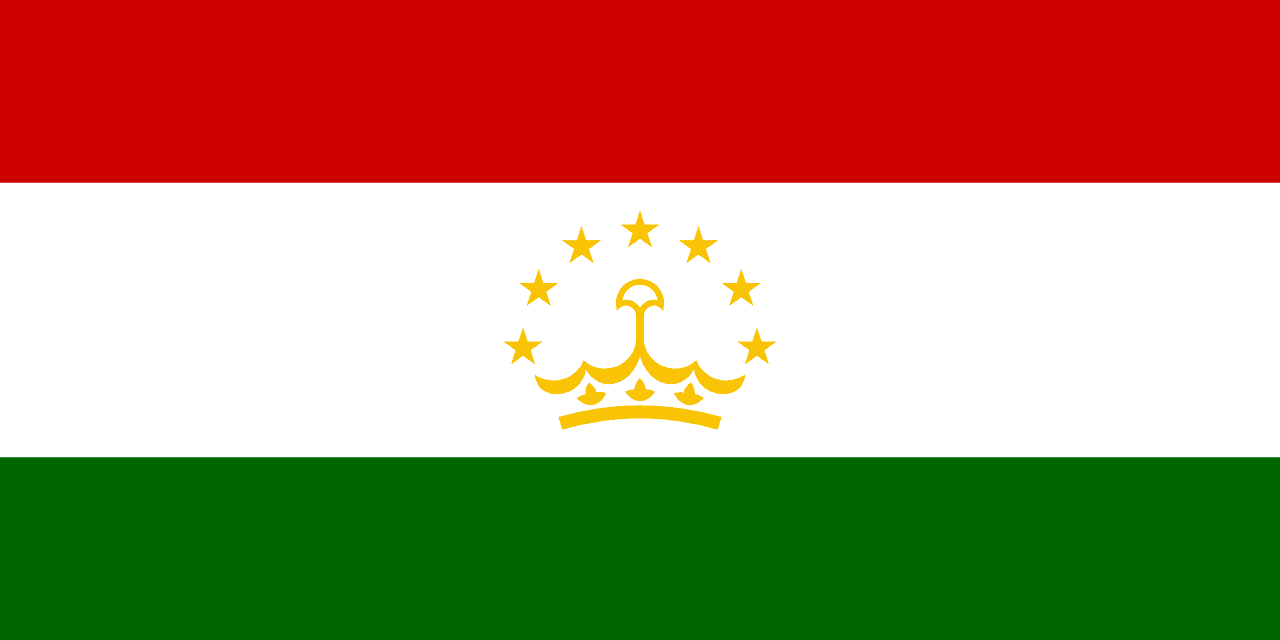
Tajikistan
Asia
Three horizontal stripes of red, white, and green with a golden crown topped by seven stars in the center of the white stripe, representing the unity of workers and peasants, cotton and snow-capped mountains, the verdant valleys, and the Somoni crown symbolizing Tajik sovereignty and the seven regions of historical Tajikistan.
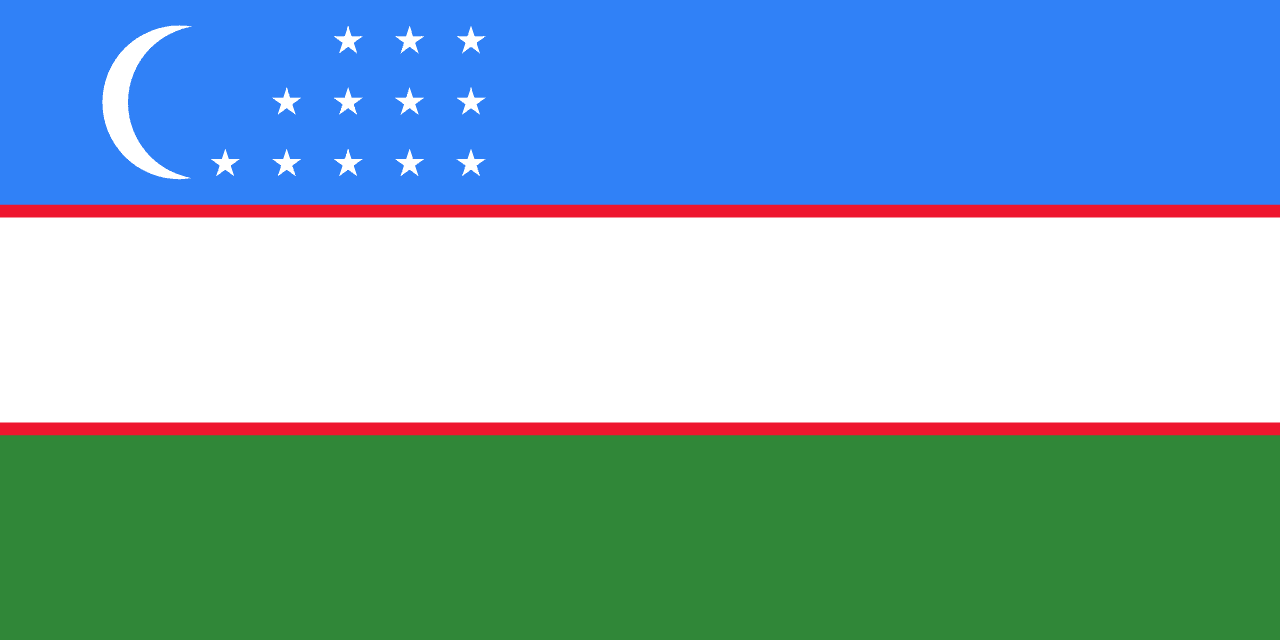
Uzbekistan
Asia
Three horizontal stripes of blue, white, and green separated by thin red stripes, with a white crescent moon and twelve white stars on the blue stripe, representing the sky and water, peace and purity, nature and fertility, the life force, the rebirth of Uzbekistan, and the twelve months of the year.
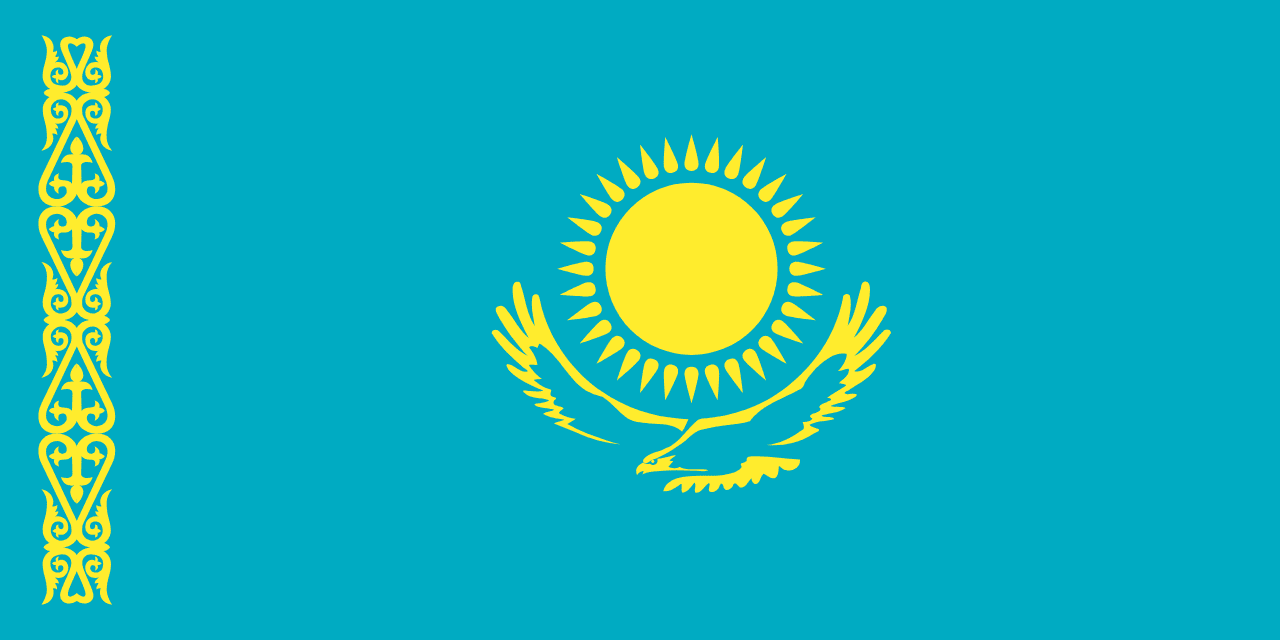
Kazakhstan
Asia
A turquoise field with a golden sun and soaring eagle in the center, and a traditional ornamental pattern on the hoist side, representing the eternal blue sky, freedom, and the rich nomadic heritage of the world's largest landlocked country.

Afghanistan
Asia
Few nations have worn their history so visibly upon their flags as Afghanistan. In just over a century, the country has cycled through more banners than any other modern state, each design mirroring the upheavals of power, ideology, and identity that have defined its story. The current flag, a stark white field bearing the Shahada in bold black script, was restored by the Taliban in 2021. To outsiders, its simplicity may appear severe, even austere. Yet within its minimal form lie deep layers of meaning: an assertion of faith, a claim to authority, and a conscious rejection of the ornate tricolors and emblems that preceded it. To understand this flag is to glimpse not only Afghanistan’s turbulent politics, but also the powerful role of religion, symbolism, and history in shaping its national identity.
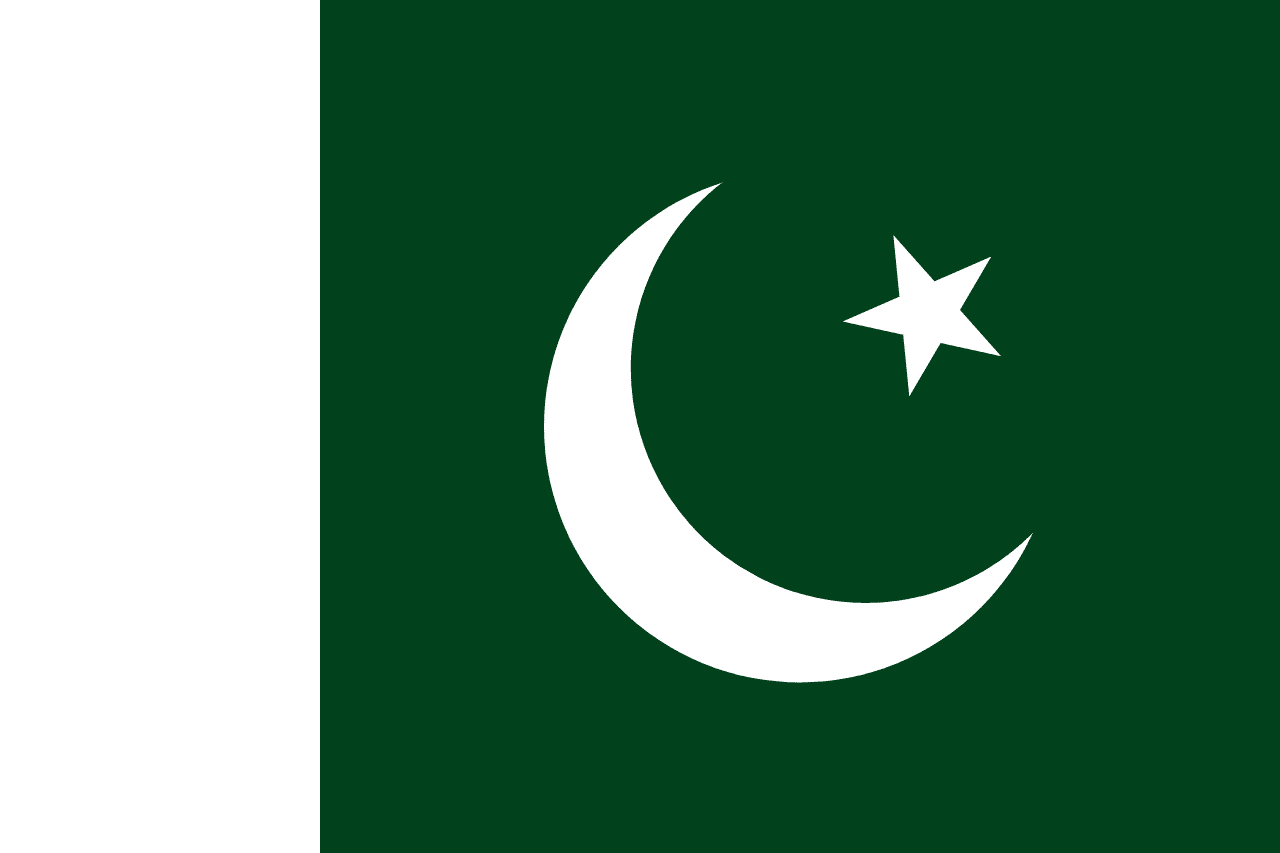
Pakistan
Asia
A green field with a white vertical stripe at the hoist, a white crescent, and a five-pointed star. The flag symbolizes Islam, religious minorities, and the guiding ideals of the nation.
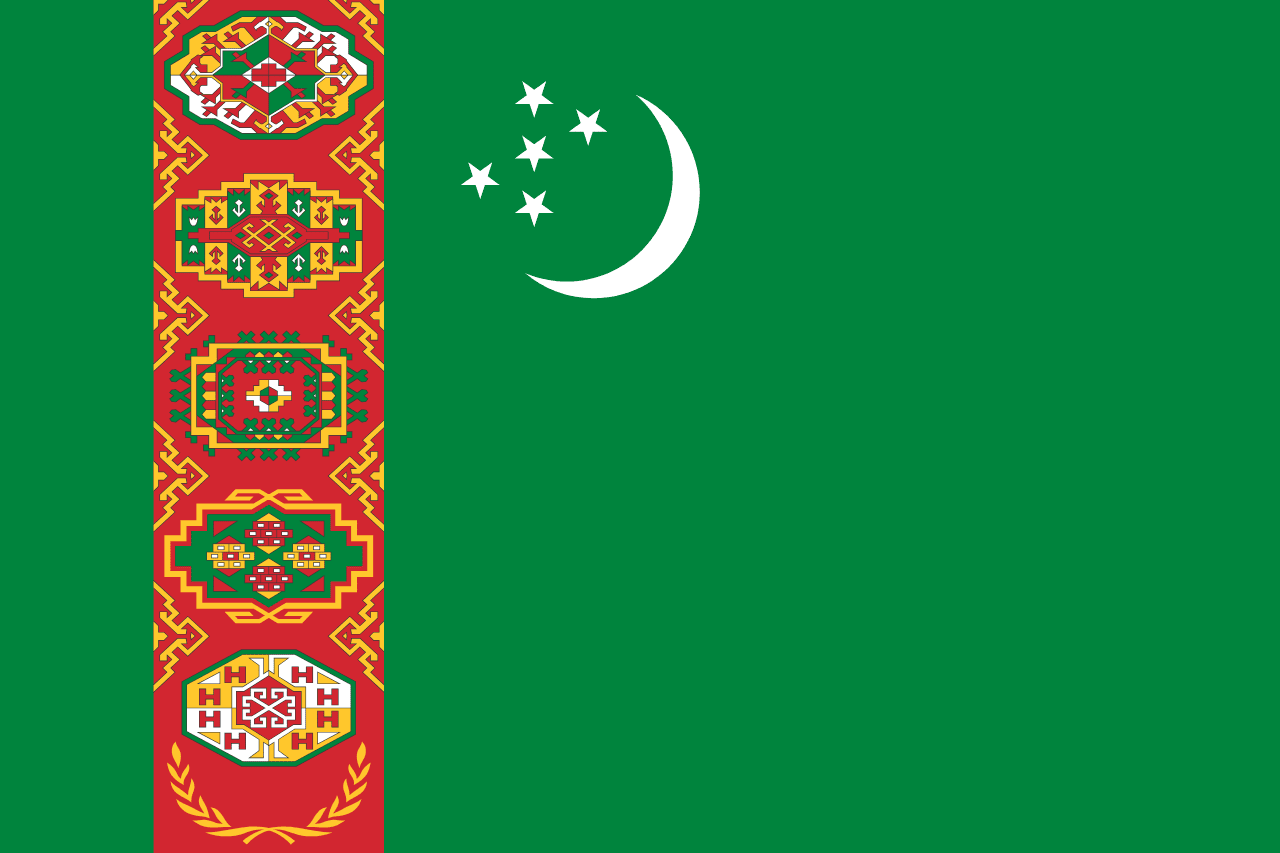
Turkmenistan
Asia
A green field with a vertical red stripe containing five traditional carpet guls (patterns) on the hoist side, and a white crescent moon with five stars in the upper left, representing Islam, the traditional carpet weaving culture, neutrality, and the five regions and senses of Turkmenistan.